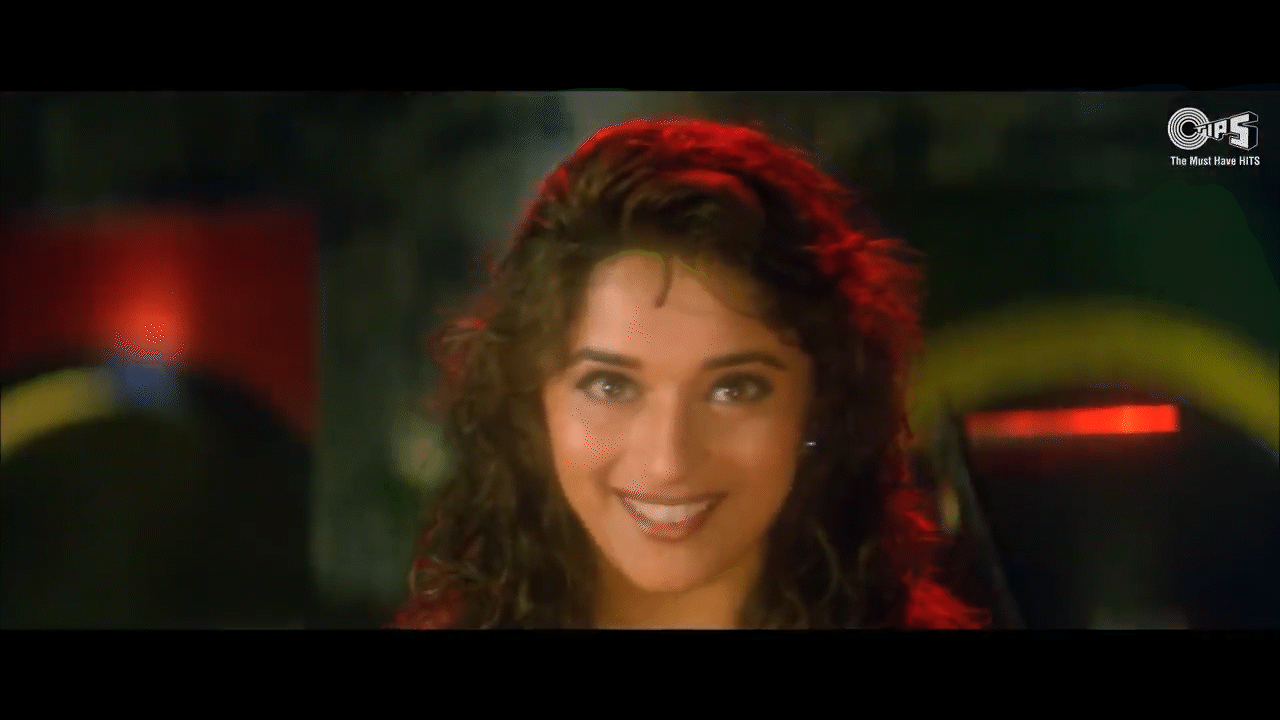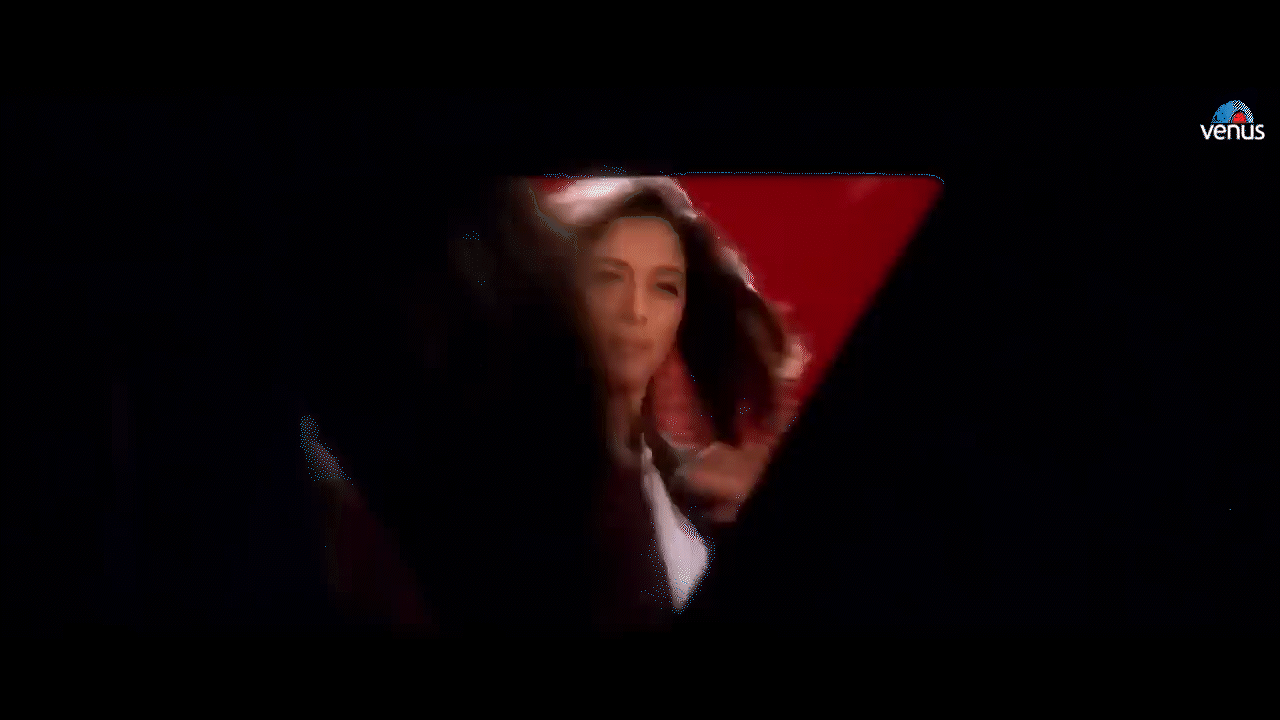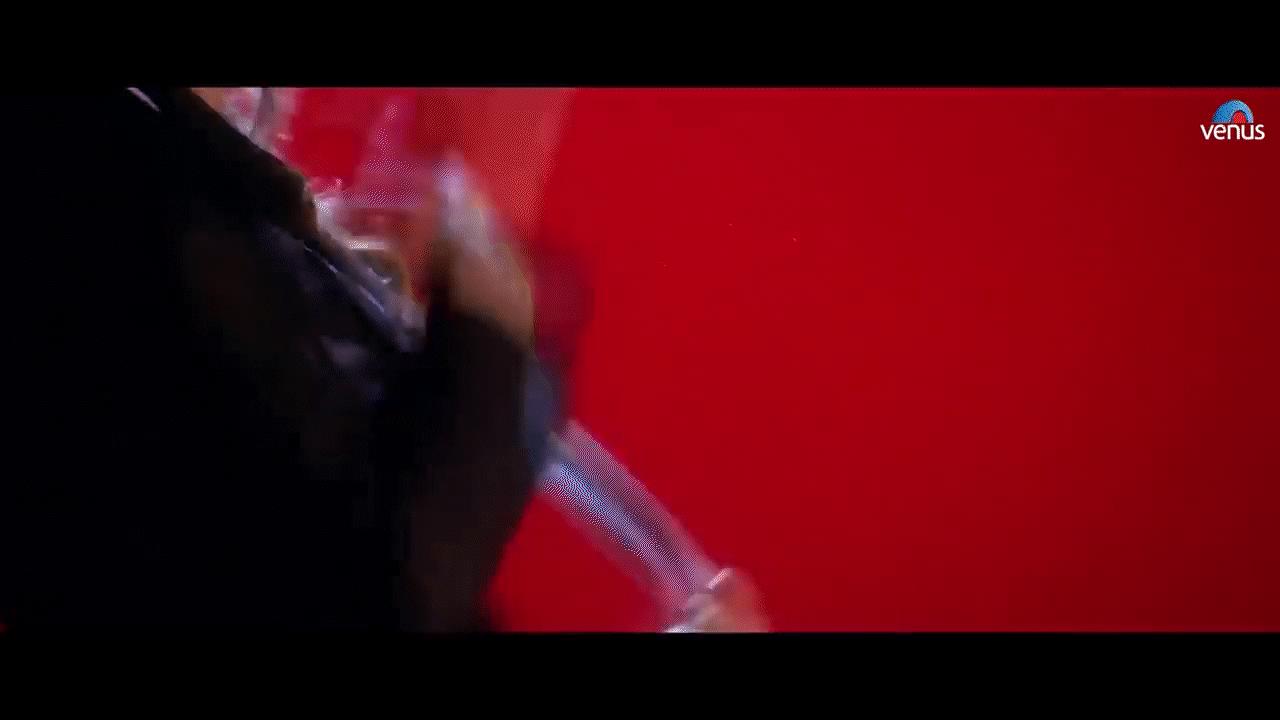Madhuri and the three closeups
and why she will always be the “dancing diva of Bollywood”
Three. The number of shots Madhuri Dixit needs to tell a story.
After Dixit’s debut in 1984, Subhash Ghai remarked that she was a “volcano of talent.” Her dancing prowess alone pulled audiences into theatres equal to her male counterparts. Her songs; Choli ke peeche, Ek do teen, O Re Piya, and countless other hits shaped the future of choreography in the country. Of course, she had competition – Sridevi, Aishwarya Rai and Karishma Kapoor could do more than just shake a leg. But there was one thing that set Dixit apart: her expressions.
In 1995, Indra Kumar gave audiences the film Raja. The film did nothing for co-star Sanjay Kapoor’s career but for Madhuri, it gave her one exceptional shot. The dance number Ankhiyaan Milaoon puts Dixit in a closeup as she draws circles with her eyes to express the word jadu or magic. The moment shot to fame and soon every MC of every reality show requested Dixit to recreate that moment.
“Editing choices for song and dance sequences can contribute significantly to determining the meaning communicated through the dance,” says Sangita Shreshthova. A closeup, as she mentions, can highlight the eyes in a dance of seduction while a wide shot could emphasise the setting or location. For Bollywood dance especially, a closeup increases dramatic effect, drawing the viewers' eyes to choreographic gestures that could be missed. TL;DR: Bollywood loves closeups. And with Madhuri in them, even more.
Her expressive closeups have gained cult-like popularity. The reason for their success, I hypothesise, is in India’s “classical” traditions.
“It is difficult to overestimate the importance of expression in communicating the narrative meaning for song and dance sequences,” says Shreshthova. Expressions are a vital part of Indian performance traditions. For the “classical” genre, four modes of expression or abhinaya are prescribed; aangik or bodily expression; vaachik, through words or lyrics; aaharya through costume; and saatwik, through expression or feeling. Abhinaya is often the last stage of learning in the tradition. After completing a significant amount of training to master pure dance or nritta, students of dance are taught expressive or natya pieces. These storytelling techniques were carried forward to Bollywood after the British dismantled the performance traditions in the courts, kothas, and temples. The film industry provided the female performers and courtesans with sustenance. In return, their sensibilities and aesthetics poured into the profession. One of which was expressive dancing.
In the multi-starrer Devdas (2002), director Sanjay Leela Bhansali recreates a kotha performance in the song Kahe Chhed Chhed Mohe, a traditional thumri or love song choreographed as a Kathak piece by the doyen of the form himself, Pt. Birju Maharaj. Dixit as Chandramukhi, a courtesan, expresses the song using all four abhinaya techniques. The result: a heart-melting rendition that is both delicate and sharp. It is a perfect example of how tradition has influenced the mainstream on film. The song begins with a kavit or a composition where words are strung together on metre to tell a story. Each line ends with the last word repeating thrice – dhai shyam rok le, rok le, rok le. It is picturised as a long close up. The camera follows Dixit as she sits down and teases the viewer with her expressions saying “Krishna has stopped me” – each repetition is choreographed with a different expression.
A long closeup shot, or a track in, gives a sense of stasis, a sense of thairav or control in dance. But what if we were to cut that closeup?
Maar Dala, one of the most culturally significant songs from Devdas, features Dixit as she waits for her lover, Devdas, played by Shah Rukh Khan, to return to the kotha. The song begins with Madhuri’s hand, in the foreground, tapping on a pair of ghungroos or dancing bells. In the background, a blurred figure enters the kotha - it is Devdas. She begins to sing – yeh kiski hai aahat (who can I hear enter?), yeh kiska hai saaya (whose shadow is this that I see?), hui dil me dastak (my heart flutters at the thought), yaha kaun aaya (of who has come). Three closeups and a close-mid shot make up the opening line of the song. In each closeup, Madhuri interprets the line through movements and facial expressions. This is a perfect example of what happens when aaharya abhinaya, aangik abhinaya and saatwik abhinaya come together. Her costume and makeup draw attention to her expressive eyes and lips – aaharya. Each closeup is expressed with a different movement – aangik. Finally, her eyes portray the desperation she feels for Devdas – saatwik. What makes these closeups extra special is director Sanjay Leela Bhansali’s use of the background. A constant flurry of dancers are seen behind Dixit – a visual representation of the excitement she feels to see her lover.
This – one line, three movements, three closeups – has become a popular method to dynamise dance sequences in Bollywood. While the number of cuts and their duration may vary, the intent stays the same.
A particularly astounding example is Dola Re Dola from the same film. Starring Madhuri and fellow dancing diva Aishwarya Rai, the song won the National Award for Best Choreography the year after its release. The song seems like a dance-off but is actually a coming together of the two loves of Devdas’ life, Paro and Chandramukhi. Baandh ke ghungroo, pehen ke main payal (Once I tie my ghunghroos and wear my anklets) is the precursing line to the chorus. This line repeats itself with four closeups and four different movements, alternating between our two actresses. As is Bhansali’s signature, the background is constantly filled with the movement of backup dancers. The cuts are timed perfectly for the viewers to viscerally feel the pace of the song. The actresses’ sparkling eyes, fluid movements and expressive faces make you breathe the music. The closeups in continuity keep the frame tight, in anticipation for the last chorus of the song. The beat drops and the camera moves back into a sparkling wide of white and red. It is a spectacle. The two dance till the song ends in a crescendo. Four closeups, four movements, four different abhinaya techniques. The result: movie magic.
But it is not just the classical genre, as Madhuri has proven time and again, that lends to this language. Pukar (2002) put two dancing stars from the biggest industries in the country together – Madhuri Dixit and South India’s Michael Jackson, Prabhu Deva. In Prabhu Deva’s self-choreographed jazz number, Kay Sera Sera, Dixit as Anjali, dances to the line pyaar hi dhadkanon ki kahaani hai (love is all about how your heart beats), pyaar hai haseen dastaan (love itself is the most beautiful story.) Pyaar hi dhadkanon ki kahaani hai – Dixit taps her chest to show ‘heartbeat' in a closeup. It cuts to her singing pyaar hi while pulling her own tie and finally, haseen dastaan takes place in a wide as she grooves to the rhythm.
The three-shot close-up cut allows three things to happen. One, the cuts give the song pace. It is often used, like in Dola Re Dola, as a precursor to the main chorus or before the beat drops. Second, it allows space for choreography that moves away from the usual full-body wide shot such as in Kay Sera Sera. And third, it shows the mastery of the actors themselves – Madhuri Dixit can create a CV of just her closeups.







Seen these films, loved the dance sequences. This article makes me reimagine them, and pulls back the curtain on what created the magic. Thanks for penning.
Big big fan of Madhuri ... Very well written and agree more than 100%